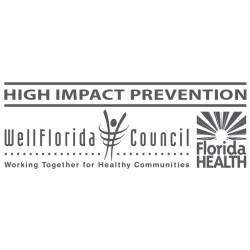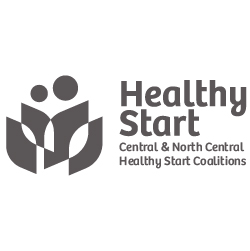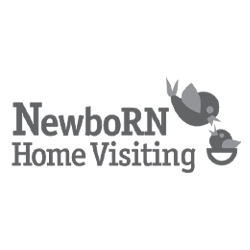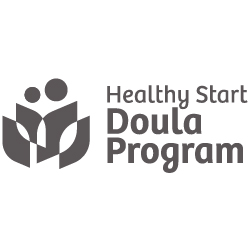The Healthcare Exchange
Lake City Repoter
By STEVEN RICHMOND, srichmond@lakecityreporter.com
The Affordable Care Act’s healthcare marketplace officially opened Oct. 1, but flooded phone lines and overloaded website servers created more confusion than solutions for many Columbia County residents.
In an effort to streamline the process, the federal government established “navigators” to provide unbiased advice to uninsured citizens, helping them answer questions and determine their healthcare needs.
“The navigators and navigator programs’ goal is to get people enrolled through the marketplace who aren’t knowledgeable on individual and family plans,” WellFlorida Council associate planner Lauren Pollock said.
The WellFlorida Council is a 40-year-old non-profit organization servicing 16 counties in the North Central Florida area, including Columbia County. They received funding for the navigator program as part of a consortium of programs funded through a grant awarded to the University of South Florida to the tune of roughly $4,200,000, providing funding for navigator projects for approximately two-thirds of all Florida counties.
The assistance is sorely needed. According to data released by the Census Bureau, 28.8 percent of Floridians age 18 to 64 had no health insurance in 2012. Only Texas has a higher proportion of uninsured individuals in the same age range.
ACA’S SHAKY START
WellFlorida’s plan is to visit public facilities such as community centers, schools and libraries, set up an array of laptops and tablets powered by a mobile WiFi hotspot and help citizens sign up for insurance.
But as many Americans are finding, the website through which to visit the healthcare exchange, healthcare.gov, has been plagued with overloaded servers, glitchy identity verification and poor web design mechanics since it went live Oct. 1.
Local agent Tyson Johnson, a 12-year veteran of the health insurance industry, said he tried going through the enrollment process only to be met with resistance and confusion.
“I was able to get past the identity verification stage, which is further than most people,” Johnson said. “Then I got to this portion about multiple choice questions about me and my family. No matter how I answered them, it always looped me back to the first page. I couldn’t get any further than that.”
WellFlorida’s plans were delayed due to the website’s poor functionality.
“As you can imagine, we are holding off until we get the website running,” WellFlorida CEO Jeff Feller said. “It won’t behoove us to be in the field until then. We need that website working.”
He also added, however, that a faulty website shouldn’t stop people from taking the first necessary steps toward new insurance plans.
“Don’t worry about the website not being fully functional yet,” Feller said. “Use the website to get info on plans and personal or family circumstances. Do a little healthy deliberation on what you want to do. Don’t drag your feet, but don’t necessarily have to be there the first day it’s up and running.”
The online exchange serves Florida and 35 other states that opted out of establishing their own healthcare marketplace.
States that established their own online exchanges have seen better results:
Citizens enrolled as of last week:
•New York: 40,000
•California: 16,000
•Kentucky: 7,000
•Connecticut: 1,426
•Maryland: 326
(Courtesy NBC, CNBC)
But for citizens of Florida, the federal government’s healthcare marketplace is the only option. According to representatives with HHS, individuals and families can apply over the phone, via email or by traditional physical mail while government IT specialists work to bring the online application up and running.
INDIVIDUALS AND FAMILIES
One of the pillars of the Affordable Care Act is that insurance companies can no longer discriminate based on gender or medical history. That being said, the only requirements for applying through the healthcare exchange are the social security numbers of every individual looking for enrollment and a proof of income (paystub, W-2, etc.) if the individual/family wishes to apply for federal subsidies.
Here’s what enrollment through the marketplace may look like to individuals and families:
Example: “Dan,” healthy single male, 28, and “John” his obese father, 64.
•Before Jan. 1, 2014: John’s premiums would be extremely high given his condition and Dan’s would be very low.
•After Jan. 1, 2014: John’s monthly premiums cannot exceed three times what Dan would pay for the same plan. John’s payments would likely go down and Dan’s would increase considerably.
“The younger age groups will see a more significant change because [premiums] increase more drastically as a percentage of what they’re currently playing,” Johnson said. “Reason is, younger people are charged less than older people [currently]. The new law says that if you’re 64 and applying for the same policy as a 21-year-old, you can’t pay three times more than what he pays. The current spread is much greater than three-to-one.”
A study by New York City management consulting firm Oliver Wyman said that the new age compression ratio will increase premiums 45 percent for individuals 18-24 and 35 percent for those 25-29.
“Insurance carriers are having to compress that difference,” Johnson said. “People on the older end might pay a little less. At the end of the day, the insurance carrier has to collect enough of a premium to pay all of the claims.”
Example: “Skylar,” 55, female smoker.
•Before Jan. 1, 2014: Skylar’s premiums would skyrocket due to her regular tobacco consumption. Companies could also justify higher premiums due to increased possibility of uterine and breast diseases in post-menopausal women.
•After Jan. 1, 2014: While insurance companies can no longer discriminate based on pre-existing conditions, they can increase premiums up to a maximum of 50 percent more than the same plan for a non-smoking 45-year-old. Insurance company rates are the same for both genders, as well.
“The only underwriting difference is tobacco vs. non-tobacco,” Johnson said. “The law does allow companies to charge tobacco users up to 1.5 more than non-users. Not all companies are assessing that full number and some aren’t differentiating.”
Example: “Hank,” 50, and his two children, “Gus,” 16, cerebral palsy, and “Marie,” 10 months.
•Before Jan. 1, 2014: Hank’s plan does not cover maternity or pediatric care and Gus may be denied coverage due to his pre-existing condition.
•After Jan. 1, 2014: All private health insurance plans offered in the marketplace must cover pediatric services and newborn care as part of several essential benefits all plans must cover. Gus, too, will be eligible for coverage.
Example: “George” has an insurance plan through his employer. He makes $36,000 annually before taxes and pays $3,600 a year in premiums.
•Before Jan. 1, 2014: George receives no government assistance for his healthcare costs.
•After Jan.1, 2014: George is eligible to receive government subsidies to cover part of his premiums if he decides to enroll in a new plan through the healthcare exchange.
A section of the ACA stipulates that individuals and families between one and four times the federal poverty level who pay more than 9.5 percent of their income on monthly insurance payments are eligible for government assistance on healthcare premiums.
However, if George’s employer offered insurance at nine percent his income, he would not be eligible for the subsidies.
“When you file your tax return at the end of the year, if your tax credit was more than it should’ve been based on your income, you would owe that money back to the government. You’d have to pay it in taxes or it’d reduce the size of your refund,” Johnson said.
Families of four with household incomes as high as $94,000 will likely receive some form of healthcare assistance.
Example: “Jillian,” 32, exercises regularly and maintains a healthy lifestyle. However, she lives in an area with historically high rates of obesity and crime.
•Before and after Jan. 1, 2014: Although Jillian is doing everything she should, it is possible she may see a higher premium than someone who lives in a location with a higher average quality-of-life among its residents.
Individual markets can vary their premiums due to the Adjusted Community Rating, which allows company to decide rates based on several demographic criteria for a given geographic area.
“[Actuaries] are probably looking at claims evidence for a given geographic area and their reimbursement rates to providers in that area,” Johnson said.
Example: “Arthur” and “Molly” have eight children, all minors.
•Before Jan. 1, 2014: Arthur and Molly’s family health plan payments would increase proportionally to the number of individuals it covers.
•After Jan. 1, 2014: A new law in the ACA says a family only has to charge for the first three minor dependents, meaning each additional child would not incur increases to premiums.
Example: “Michael,” 28, swims regularly and maintains himself in excellence physical condition. He decides not to enroll in healthcare because he is healthy and believes injury/illness are unlikely.
•Before Jan. 1, 2014: Michael would pay no premiums and have to cover any medical bills 100 percent out-of-pocket.
•After Jan. 1, 2014: Michael still pays no premiums and pays bills 100 percent out-of-pocket.
However, the ACA stipulates that anyone not enrolled in healthcare by March 31, 2014 will be assessed a penalty on their 2014 taxes (filed in early 2015).
Michael, uninsured, would have to pay one percent of his income or $95, whichever is greater, on his 2014 taxes. In 2015, those numbers increase to the greater of two percent of income or $325. In 2016, 2.5 percent of income or $695. Penalties for uninsured minors are half those amounts.
People like Michael are what’s known as “young invincibles”—young adults who are unlikely to buy into insurance because they’d rather pay the fine than a year’s worth of premiums on the assumption they are too healthy to warrant medical insurance.
“Younger people tend to be healthier and create fewer claims, but their premiums will help support the less healthy population,” Johnson said. “The fear is that they’ll pay the $95 fine and go without the coverage.
We would encourage them to think about the risk of not having coverage. Suppose you’re in an accident or you get ill. Any of these things can happen.”
INSURANCE FOR BUSINESSES
Businesses are not required to begin providing healthcare insurance for employees until 2015. However, they will be able to enroll for employee workplace plans through the marketplace beginning Nov. 1.
If a business employers 25 or fewer full-time employees who average less than $50,000 annually, it will qualify for healthcare tax credits on plans under the exchange.
Businesses who employ over 50 full-time workers (or the hourly equivalent of such) will be levied a fine of $2,000 per person if their workers are uninsured in 2015.
THE ROAD AHEAD
The Affordable Care Act has received mixed reviews from critics across America. Some praise the law’s new ban on discrimination against pre-existing conditions and exploitative pricing plans, bringing insurance to millions who’ve never been enrolled before.
However, others feel the law does not do enough t address the underlying causes of steep medical bills and the high price of health in the United States.
“This is more health insurance reform than healthcare reform,” Johnson said. “The underlying costs of healthcare, what doctors, hospitals and pharmacists get paid, are influenced by a host of things that went largely unaddressed.”
Critics say the steep cost of healthcare is driven by the elementary economic principal of supply and demand. The theory goes that when supply of a commodity or service goes down, its demand, and price, go up.
“There’s a shortage of doctors and nurses and it’s just going to get greater,” Johnson said. “We also have an aging population that’s putting a greater demand on the healthcare system.”
Critics argue that allocated funding for subsidies could have been used to address tort reform (frivolous lawsuits) and educational loan forgiveness for members of the medical community.
“I can see where aspects of the ACA will have a short-term positive impact,” Johnson said, “But doesn’t, in my opinion, do much to address the increased costs in the healthcare sector.”
For assistance with the ACA marketplace, or to sign up for a plan, visit healthcare.gov or call 1-800-318-2596.
Back to News page












